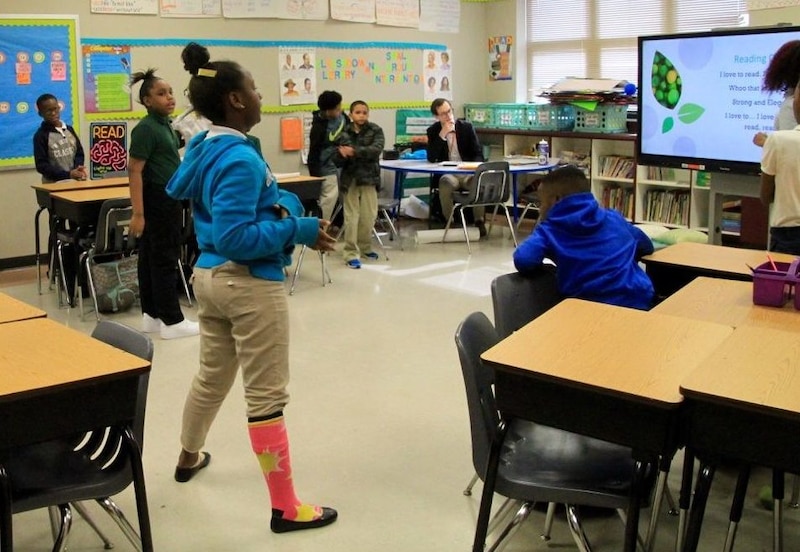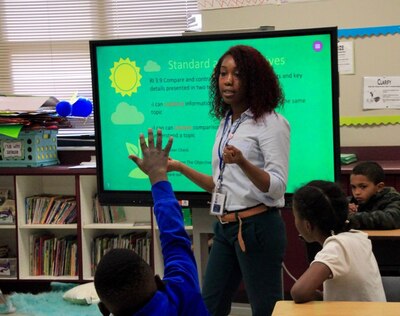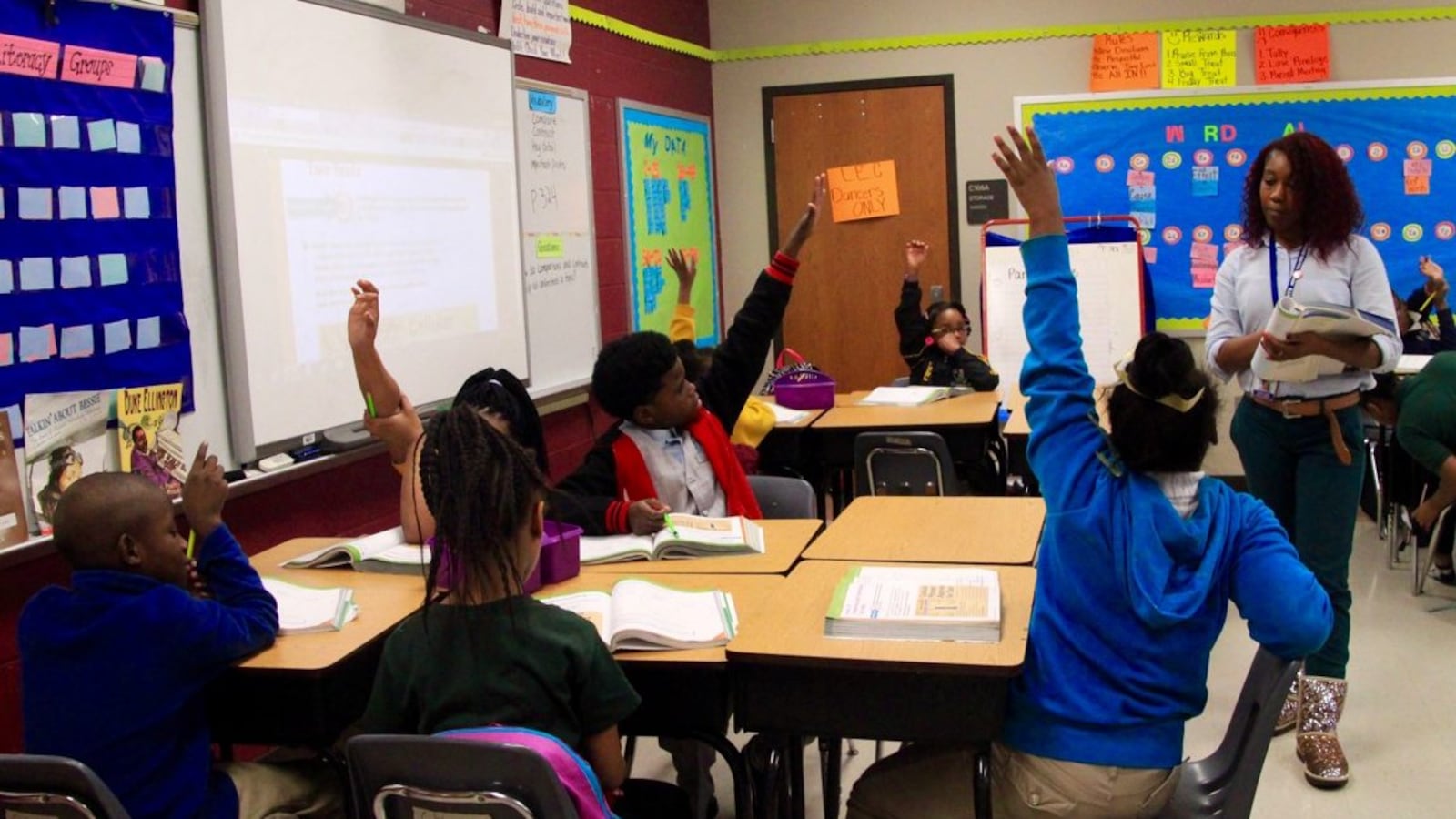How do teachers captivate their students? Here, in a feature we call How I Teach, we ask great educators how they approach their jobs. You can see other pieces in this series here.
Alexia Young loves to keep her third-grade class on the move.
Every day, her students at Lucie E. Campbell Elementary School in Memphis jump up from their desks, dance around the classroom, and belt out a “reading chant,” complete with hand motions.
“I love to read. I’m intelligent. Whoo that knowledge! Strong and elegant, I love to read, read, read!”
Young says the ritual helps her students focus before they dive into reading time. But equally as important, it gets them up and moving.

“I teach third-graders. And I know how necessary it is for students this age to be up and moving throughout the day,” said Young, who doubles as her school’s dance coach. “They weren’t meant to learn tied to a desk.”
Chalkbeat spoke with Young about why she became a teacher, the pedagogy of movement, and how she incorporates plays and debates into her classroom. (Her answers have been lightly edited for clarity.).
Why did you become a teacher?
I specifically wanted to be an urban educator. I was raised in Texas, and attending the University of Memphis for college brought me here. I started teaching in a private Christian environment, but I wanted to start teaching in a different environment. That’s how I came to be a part of the Memphis Teacher Residency, (which is an alternative teacher training program in the city.)
I believe that knowledge is power. To quote the 1954 U.S. Supreme Court decision on Brown v. Board of Education: “In these days, it is doubtful that any child may reasonably be expected to succeed in life if he is denied the opportunity of an education.” This quote is still accurate for today’s students. In Memphis, children taught in urban settings are often listed as negative statistics. The level of adequate education has declined over the years based on student behavior, vocabulary deficiency, and socioeconomic status. Since I believe in equal education, I want to be an asset in changing those statistics. I want to use my gifts and skills of teaching to uplift and provide exceptional public education to children in urban areas like North Memphis. I believe those students matter and their future matters.
What is one of your favorite lessons to teach? How did you come up with the idea?
I love to teach drama and plays in my classroom. We spend a whole series of lessons on plays. I select a play — last week it was “The Alligator and the Ant” — and then assign roles to different students. We do a read-out-loud, where students get to stand up, speak loudly, and really get into it. Even if the students are hesitant at first, by the end of the play, they are actually into their character. These lessons are such a fun way to get students excited about reading. I love to hear and watch the students come to life in plays with twisted plots.
Similar to acting out a drama, I teach my students through debates. When we are reviewing results of a class test, my students have the opportunity to debate against each other about the answers. They get into this, like they get into acting out a drama. It makes going over the answers so much more engaging and active. It’s also a way to ensure that the class understands why the correct answers are correct.
How does being a dance instructor influence the way you teach?
Movement is just so important. I focus on third-grade reading, and reading implies sitting quietly and looking at a page. But that doesn’t always need to be the way we teach reading. Just like music and dance, reading can be a peaceful and tranquil activity. But it can also be a time to get up and act out a scene, or chant and dance together.
I try to incorporate movements, like hand motions, to show students what the words they are reading actually mean. It also helps get their energy up. It’s about connecting the dots, and I don’t know if I would have thought about reading this way without my background in dance.
What does your classroom look like?
My classroom is vibrant in neon colors. I also display students’ work more than “adult work.” For example, most of the charts on my walls are created by my students. I think it helps my students have a sense of ownership of the classroom.
How do you get your class’s attention if students are talking or off task?

We practice “whole brain teaching.” By this, I mean engaging the class as a whole and getting everyone back on track together. At the beginning of the school year, I teach the class chants that I use every day to refocus them. I say “class class,” and they respond together, “yes, yes.” As simple as this is, it really works well. I’ll also clap to get the class back on track. If I see one of the students is distracted or just not tracking with a lesson, I’ll clap out a beat that the whole class has to copy. This kind of jolts students back to paying attention and gives us a starting point to build off of.
How do you get to know your students and build relationships with them? What questions do you ask or what actions do you take?
I play multiple roles at the school. I am the dance coach, mentor teacher, and grade chair. I have been the dance coach here for three years, and that’s created so many opportunities to get to know some of my students on another level.


